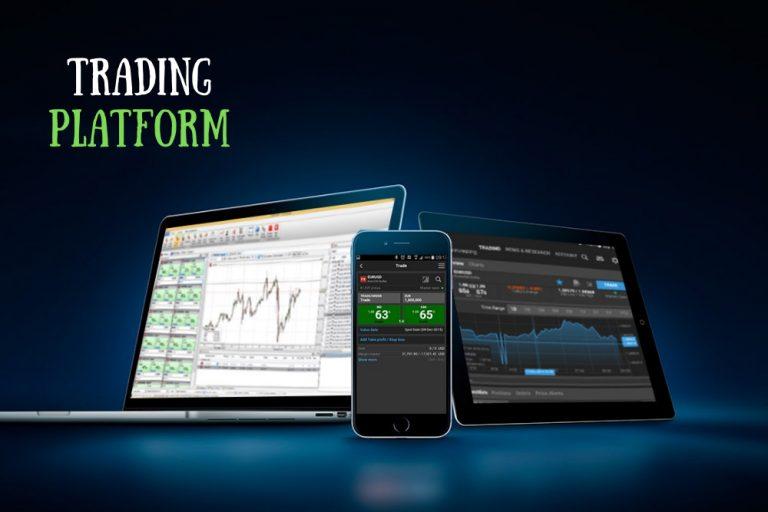The financial markets are evolving rapidly, with trading volumes now exceeding $7 trillion daily across various asset classes, including forex, stocks and cryptocurrencies. These top 20 trading strategies in 2024 are designed to enhance trading performance and maximise your returns.

Trading in 2024 is more dynamic than ever, with the global trading volume projected to exceed $11 trillion, reflecting a growing interest of retail and institutional investors. The evolution of financial markets, driven by technological advancements and economic shifts, has led to the development of new trading strategies designed to direct this complex environment. In today’s advancing world, having a good understanding of various trading strategies is essential for both beginners and seasoned traders to maximise their potential returns.
The increasing use of artificial intelligence, machine learning, and algorithmic trading has transformed how traders approach the markets. According to recent studies, over 80% of trades in major financial markets are now executed by algorithms. This shift necessitates a deep understanding of diverse trading strategies, enabling traders to make informed decisions, manage risks, and capitalise on opportunities in 2024’s volatile markets.
What are Trading Strategies?
Trading strategies are systematic plans that traders follow to make buying or selling decisions in financial markets. The goal of a trading strategy is to identify profitable opportunities while minimising risks. Strategies can be customised to various market conditions, asset classes, and trading styles, such as day trading, swing trading, or long-term investing. These strategies help traders make informed decisions based on market conditions and their own goals, rather than just guessing or relying on emotions.
These strategies are based on a set of predefined rules and criteria, including technical indicators, market analysis, and risk management principles.
- Entry and Exit Rules: These are guidelines on when to start and stop a trade. For example, a strategy might suggest buying a stock when its price crosses a certain level and selling it when it hits another level.
- Risk Management: This part of the strategy helps traders control how much money they could lose on a trade. It might include setting stop-loss orders, which automatically sell an asset if its price falls too much.
- Analysis: Traders use different types of analysis to make decisions. Technical analysis looks at past price movements and chart patterns, while fundamental analysis examines economic data and company performance.
How are AI and economic changes shaping trading strategies in 2024?
As we move into 2024, several significant trends are shaping the landscape of trading. These trends are driven by advancements in technology, shifting market dynamics, and evolving economic factors. Understanding these trends is crucial for traders who want to stay competitive and make informed decisions.

Emerging Technologies: AI and Machine Learning
Artificial Intelligence (AI) and Machine Learning (ML) are revolutionising the trading world. Here’s how:
- Algorithmic Trading: AI-powered algorithms are increasingly being used to execute trades at high speeds and volumes. These algorithms can analyse vast amounts of data to identify trading opportunities that human traders might miss. They also help in executing trades with minimal market impact.
- Predictive Analytics: Machine learning models are used to predict market movements based on historical data and patterns. These models can forecast price trends and volatility, providing traders with valuable insights for making strategic decisions.
- Natural Language Processing (NLP): NLP is used to analyse news, social media, and other textual data to gauge market sentiment. By understanding public sentiment and reactions to events, traders can make more informed decisions.
- Automation and Robotics: Automated trading systems, powered by AI, are capable of managing trades, executing orders, and adjusting strategies without human intervention. This reduces the potential for emotional trading and allows for more consistent strategy execution.
- Enhanced Data Analysis: AI and ML provide advanced data analysis capabilities, enabling traders to process and interpret complex datasets more efficiently. This helps in identifying patterns and trends that can inform trading strategies.
Market Dynamics and Economic Factors
Market dynamics and economic factors are also important in shaping trading strategies in 2024. Key aspects include:
- Global Economic Uncertainty: Economic factors such as inflation, interest rates, and geopolitical events continue to influence market conditions. Traders need to stay informed about global economic trends and how they impact different asset classes.
- Interest Rate Changes: Central banks around the world are adjusting interest rates in response to economic conditions. Changes in interest rates can affect asset prices, currency values, and investment flows, requiring traders to adjust their strategies accordingly.
- Market Volatility: Increased market volatility, driven by factors such as economic uncertainty, geopolitical tensions, and market sentiment, is a significant consideration. Traders are adopting strategies to manage and capitalise on volatility, including options trading and volatility forecasting.
- Regulatory Changes: New regulations and policies can impact trading practices and market behaviour. Traders must stay updated on regulatory changes in their regions and sectors to ensure compliance and adapt their strategies.
- Shift in Market Participants: The rise of retail traders, fueled by easy access to trading platforms and information, is changing market dynamics. The behaviour of retail traders can influence market trends and liquidity.
- Sustainable Investing: There is a growing focus on environmental, social, and governance (ESG) factors in investing. Traders are increasingly considering ESG criteria when making investment decisions, reflecting broader market trends towards sustainability.
Best platforms to use trading strategies in 2024
Selecting the right platform to implement trading strategies is just as important as the strategies themselves. Here are some of the best platforms that can help traders implement their strategies successfully:
- MetaTrader 4 (MT4) MetaTrader 4 is one of the most popular trading platforms. It offers advanced charting tools, a wide range of technical indicators, and the ability to automate trading strategies using Expert Advisors (EAs). This platform is ideal for traders who prefer a customisable and user-friendly interface.
- MetaTrader 5 (MT5) An upgrade from MT4, MetaTrader 5 includes additional features like more timeframes, more indicators, and an economic calendar. It supports trading in a variety of financial instruments, including stocks and commodities, making it suitable for multi-asset traders.
- TradingView TradingView is known for its powerful charting tools and a strong community of traders who share their strategies and ideas. It offers a user-friendly interface, real-time data, and a variety of technical analysis tools. TradingView is excellent for traders who value a visual and interactive approach to trading.
- Thinkorswim Offered by TD Ameritrade, Thinkorswim is a comprehensive trading platform that provides advanced charting, technical analysis, and the ability to test trading strategies using paper trading. It’s ideal for both novice and experienced traders looking for a robust trading experience.
- eToro is a social trading platform that allows users to follow and copy the trades of successful traders. It’s a good choice for those who want to leverage the strategies of others while gaining exposure to various financial markets.
- Interactive Brokers (IBKR) Interactive Brokers offers a powerful trading platform with a wide range of tools and resources. It supports various trading strategies, including algorithmic trading, and provides access to global markets. It’s ideal for traders who need advanced features and low-cost trading options.
- NinjaTrader NinjaTrader is popular among active traders for its advanced charting capabilities and customisable features. It supports algorithmic trading and backtesting of strategies, making it suitable for traders who want to develop and test their trading algorithms.

Top 20 trading strategies in 2024
Trend Following: Trend following is a strategy where traders aim to profit by moving in the direction of the current market trend. This involves identifying whether the market is trending upwards or downwards and making trades that align with that trend. Traders often use tools like moving averages, trend lines, and momentum indicators to spot these trends. For example, a trader might buy a stock if its price is consistently above its moving average, indicating an uptrend. Conversely, if the price is below the moving average, the trader might sell or short the stock.
Mean Reversion: Mean reversion is based on the idea that prices will eventually return to their average level over time. Traders using this strategy look for situations where prices have deviated significantly from their historical averages. Indicators like the Relative Strength Index (RSI) help identify overbought or oversold conditions. For example, if a stock’s RSI is very high, it may be overbought, suggesting that the price might soon fall back towards its average level. Traders buy or sell with the expectation that the price will revert to its mean.
Breakout Trading: Breakout trading involves entering a trade when the price breaks out of a predefined range or chart pattern, like a support or resistance level. Traders look for significant price movements beyond these levels as signals of strong market momentum. For instance, if a stock’s price breaks above a resistance level, it could signal a new uptrend, prompting traders to buy. Conversely, a break below a support level might indicate a downtrend, leading traders to sell. This strategy aims to profit from rapid price movements after the breakout.
Scalping: Scalping is a high-frequency trading strategy where traders make many trades throughout the day, aiming to profit from small price movements. Scalpers hold positions for very short periods, from seconds to minutes, and often make dozens of trades daily. They rely on technical indicators and high-speed trading platforms to execute trades quickly and efficiently. For example, a scalper might buy a stock, hold it for a few seconds as the price rises slightly, and then sell for a small profit. This strategy requires quick decision-making and tight control over transaction costs.
Swing Trading: Swing trading involves holding positions for several days to weeks, aiming to profit from short- to medium-term price movements within a larger trend. Swing traders use technical analysis to identify potential reversal points and trade based on expected price swings. For example, if a stock is expected to rise after a brief dip, a swing trader might buy the stock and hold it until the price rises before selling. This strategy balances the speed of day trading with the longer-term approach of position trading.
Arbitrage: Arbitrage is the practice of exploiting price differences between markets or instruments. Traders buy an asset in one market where it is priced lower and sell it in another market where it is priced higher, earning a profit from the price discrepancy. For instance, if a stock is trading at a lower price on one exchange compared to another, arbitrageurs buy the stock on the cheaper exchange and sell it on the more expensive one. This strategy relies on quick execution and access to multiple markets.
Pairs Trading: Pairs trading is a market-neutral strategy where traders take long and short positions in two related assets simultaneously. The goal is to profit from the relative performance of the two assets rather than their absolute price movements. For example, if a trader believes that Company A’s stock will outperform Company B’s stock, they might go long on Company A and short on Company B. The strategy aims to benefit from the difference in performance between the two assets.
Day Trading: Day trading involves buying and selling financial instruments within the same trading day. Day traders aim to profit from short-term price movements and avoid holding positions overnight to minimise risk from unexpected events. They use a combination of technical analysis, market news, and real-time data to make quick trading decisions. For example, a day trader might buy a stock in the morning, sell it later in the day as the price rises, and close out the position by the end of the day.
Momentum Trading: Momentum trading focuses on assets that are showing strong price momentum. Traders buy assets that are trending upwards and sell those trending downwards, hoping to capitalise on the continuation of these trends. Momentum traders rely on technical indicators like the Moving Average Convergence Divergence (MACD) and relative strength to gauge the strength and direction of the trend. For example, if a stock is experiencing a strong upward trend, a momentum trader might buy it, expecting the trend to continue.
Algorithmic Trading: Algorithmic trading involves using computer algorithms to execute trades based on predefined criteria. These algorithms can analyse large volumes of data and execute trades at high speeds, often faster than human traders. For example, an algorithm might be programmed to buy a stock when its price crosses above a certain moving average and sell when it drops below another average. This strategy is popular among institutional investors and is becoming increasingly accessible to retail traders.
Position Trading: Position trading is a long-term strategy where traders hold positions for months or even years, aiming to profit from major market trends. Position traders typically use fundamental analysis to assess the long-term potential of an asset based on economic indicators and company performance. For example, a position trader might buy a stock based on its strong financial performance and hold it for several years, benefiting from its long-term growth.
High-Frequency Trading (HFT): High-frequency trading is a type of algorithmic trading that involves executing a large number of orders at extremely high speeds, often within microseconds. HFT strategies are used by institutional traders to gain an edge in the market through rapid trading and sophisticated algorithms. For example, HFT might involve using algorithms to exploit small price inefficiencies that exist for only brief moments, requiring very fast execution.
News-Based Trading: News-based trading involves making trading decisions based on news events and economic data releases that can impact market prices. Traders monitor news such as earnings reports, central bank announcements, and geopolitical events to react quickly to market-moving information. For example, if a company announces unexpectedly high earnings, traders might buy the stock anticipating a price increase.
Grid Trading: Grid trading involves placing buy and sell orders at set intervals around a central price level, creating a grid of orders. This strategy profits from market volatility within a defined range by capturing price movements between these orders. For example, a trader might set buy orders at regular intervals below the current price and sell orders at intervals above it, aiming to profit from the fluctuations within the grid.
Contrarian Trading: Contrarian trading involves taking positions that are opposite to the prevailing market sentiment. Contrarian traders believe that markets often overreact to news and trends, creating opportunities to profit from market corrections. For example, if most traders are selling a stock out of fear, a contrarian trader might buy the stock, expecting it to rebound when the market realises it has overreacted.
Options Trading: Options trading involves buying and selling options contracts, which give traders the right, but not the obligation, to buy or sell an asset at a predetermined price. Options strategies include covered calls, where traders own the underlying asset and sell call options to generate income, and straddles, where traders buy both calls and put options to profit from significant price movements in either direction.
Fibonacci Retracement: Fibonacci retracement uses Fibonacci levels to identify potential support and resistance points in the market. Traders apply Fibonacci ratios to chart patterns to predict where prices might reverse. For example, after a stock experiences a significant price movement, traders use Fibonacci levels to identify potential price levels where the stock might find support or resistance.
Dollar-Cost Averaging (DCA): Dollar-cost averaging involves investing a fixed amount of money at regular intervals, regardless of the asset’s price. This strategy helps reduce the impact of market volatility by spreading out the investment over time. For example, an investor might invest £100 in a stock every month, buying more shares when prices are low and fewer when prices are high, averaging out the cost of the investment.
Carry Trade: A carry trade involves borrowing money in a currency with a low interest rate and investing it in a currency with a higher interest rate. Traders profit from the difference in interest rates between the two currencies. For example, borrowing Japanese yen (which has a low interest rate) and investing in Australian dollars (which has a higher interest rate) allows traders to earn interest on the higher-yielding currency.
Martingale Strategy: The Martingale strategy is a high-risk approach where traders double their position size after each loss, aiming to recover their losses and make a profit eventually. This strategy assumes that the trader will eventually win and cover all previous losses. For example, if a trader loses £50 on a trade, they might double their next position to £100, hoping to recover the £50 loss plus make an additional profit. This strategy requires substantial capital and a strong risk tolerance.

Pallavi Singal is the Vice President of Content at ztudium, where she leads innovative content strategies and oversees the development of high-impact editorial initiatives. With a strong background in digital media and a passion for storytelling, Pallavi plays a pivotal role in scaling the content operations for ztudium’s platforms, including Businessabc, Citiesabc, and IntelligentHQ, Wisdomia.ai, MStores, and many others. Her expertise spans content creation, SEO, and digital marketing, driving engagement and growth across multiple channels. Pallavi’s work is characterised by a keen insight into emerging trends in business, technologies like AI, blockchain, metaverse and others, and society, making her a trusted voice in the industry.


































